Are you navigating the complexities of contract performance guarantees and looking for a reliable template? Understanding the nuances of these documents can be daunting, but having a solid framework can make all the difference in your contractual relationships. A well-crafted letter not only articulates the terms clearly but also instills confidence between parties involved. If you want to delve deeper into drafting a perfect performance guarantee letter, keep reading!

Parties Involved
A contract performance guarantee often involves multiple parties, such as the principal party (the party requiring the guarantee), the guarantor (the entity providing the guarantee), and the beneficiary (the party benefiting from the guarantee). For instance, a construction company (principal) may require a performance guarantee from a bank (guarantor) to ensure completion of a project for a client (beneficiary) by a specified date, often accompanied by financial stakes, penalties, and conditions. This guarantee serves as a financial assurance in case of non-performance or default by the principal, thereby safeguarding the interests of the beneficiary while establishing a formal relationship between all involved entities.
Guarantee Amount
A contract performance guarantee is crucial for ensuring the obligations of a contractor are fulfilled in projects valued at significant sums, typically ranging from thousands to millions of dollars. The guarantee amount often reflects a percentage of the total contract value, commonly set between 5% and 10%, providing a safety net for the project owner. In construction agreements, for example, if the total contract value is $1 million, the guarantee amount would range from $50,000 to $100,000, secured by a bank or insurance company. This amount vouches for compliance with quality standards, project timelines, and completion of specified work, minimizing financial risk for stakeholders involved in high-stakes ventures.
Obligations and Conditions
A contract performance guarantee outlines specific obligations and conditions that ensure adherence to agreed terms. The guarantee typically includes a monetary amount, often expressed as a percentage (10-20%) of the total contract value, deposited as collateral to protect against non-performance. Conditions for these guarantees often stipulate timely delivery of goods or services at a designated location (e.g., construction site, client office) within a specified timeframe, typically ranging from 30 to 90 days depending on project complexity. In cases of failure, clients can invoke the guarantee, which may require documentation or evidence of non-compliance. The validity period of guarantees usually extends to the project completion date plus an additional safeguard period (6-12 months) to cover any defects or performance issues. Important clauses often address dispute resolution mechanisms, which may involve mediation or arbitration services, as well as jurisdictional specifics that designate which courts will handle conflicts related to the contract. These measures serve to protect all parties involved by outlining clear expectations and repercussions for breaches of contract.
Duration of Guarantee
A performance guarantee ensures that the obligations undertaken in contracts are fulfilled effectively. The duration of the guarantee typically spans the entire term of the contract, often extending beyond the finishing date to cover a specified grace period for any potential defects or incomplete work. For instance, in construction contracts, this duration may last between one to two years after project completion, encompassing warranty clauses that protect against significant structural defects or failures. Each industry or contractual agreement may dictate unique terms, influenced by factors such as the type of project, local regulations, and the parties involved. Consequently, understanding these nuances is essential for effective risk management and assurance of project integrity.
Governing Law and Jurisdiction
A contract performance guarantee should clearly outline the governing law and jurisdiction to ensure legal clarity. The governing law dictates which jurisdiction's laws will interpret the contract, usually associated with the location of the parties or where the contract is executed. Jurisdiction defines the authority of specific courts to hear disputes. For instance, New York laws might govern a contract executed in New York City, while disputes would be settled in local courts. It is essential to specify these details to avoid ambiguity in legal proceedings, enhancing compliance with regional regulations. Properly defining these elements can protect parties from potential complications arising from different legal systems.

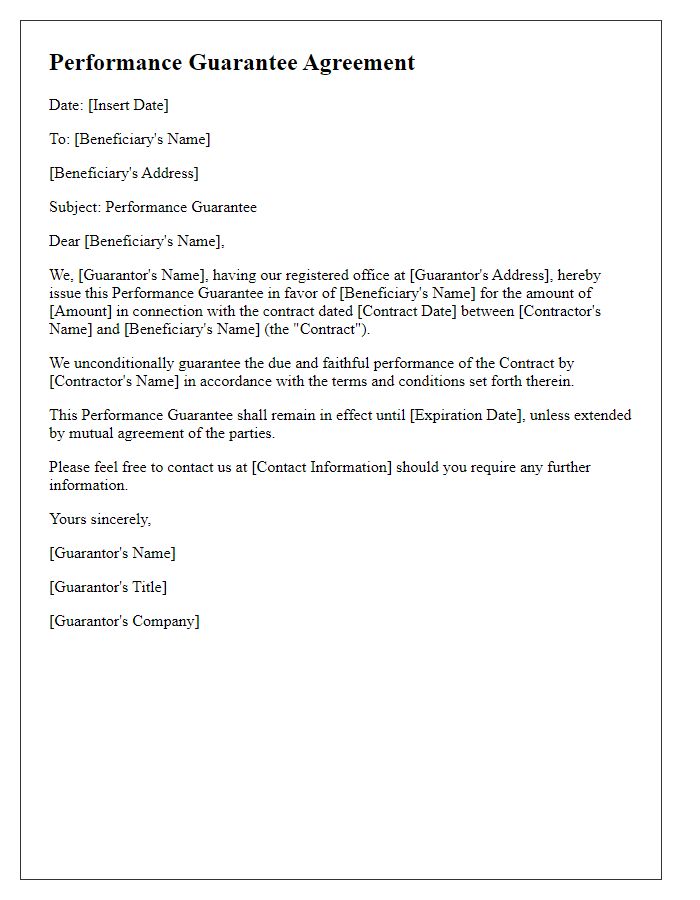
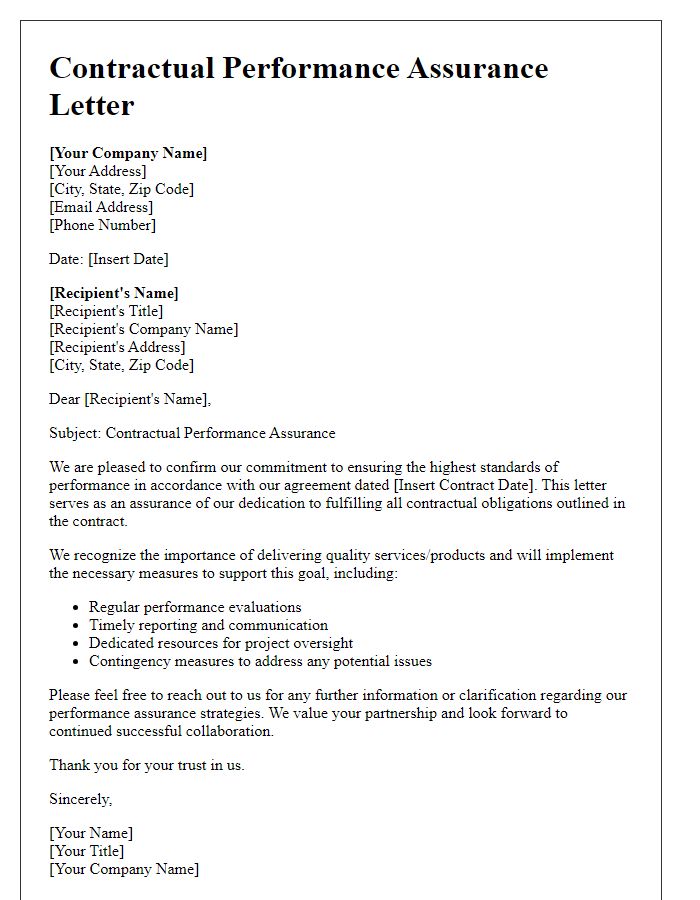
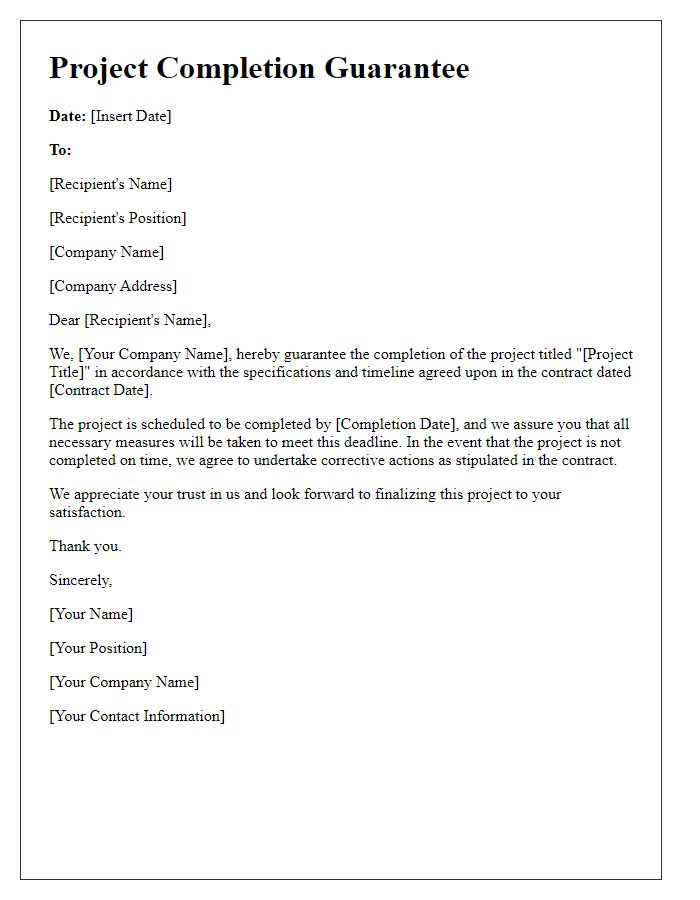
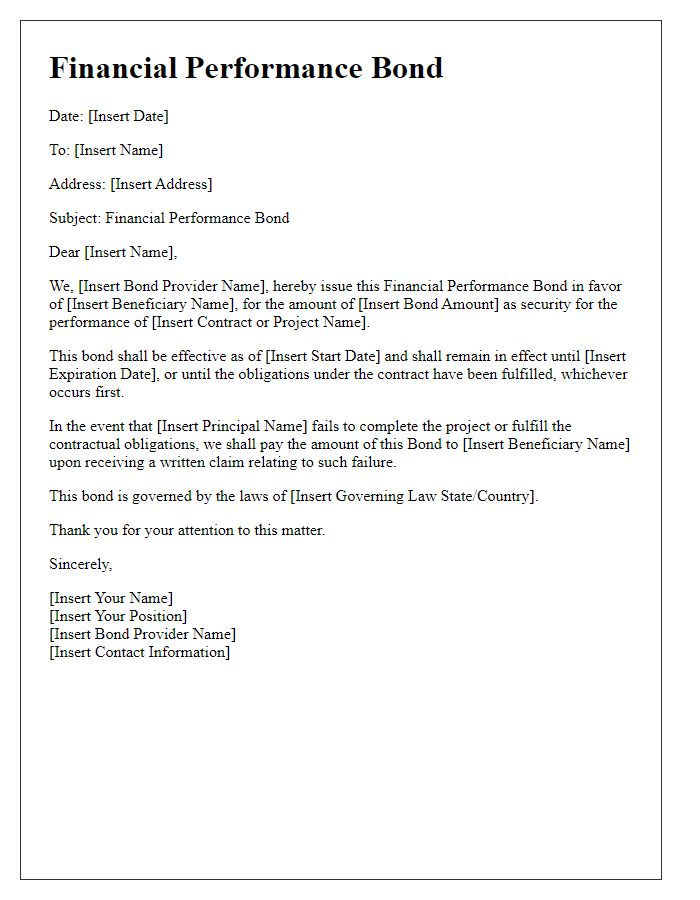
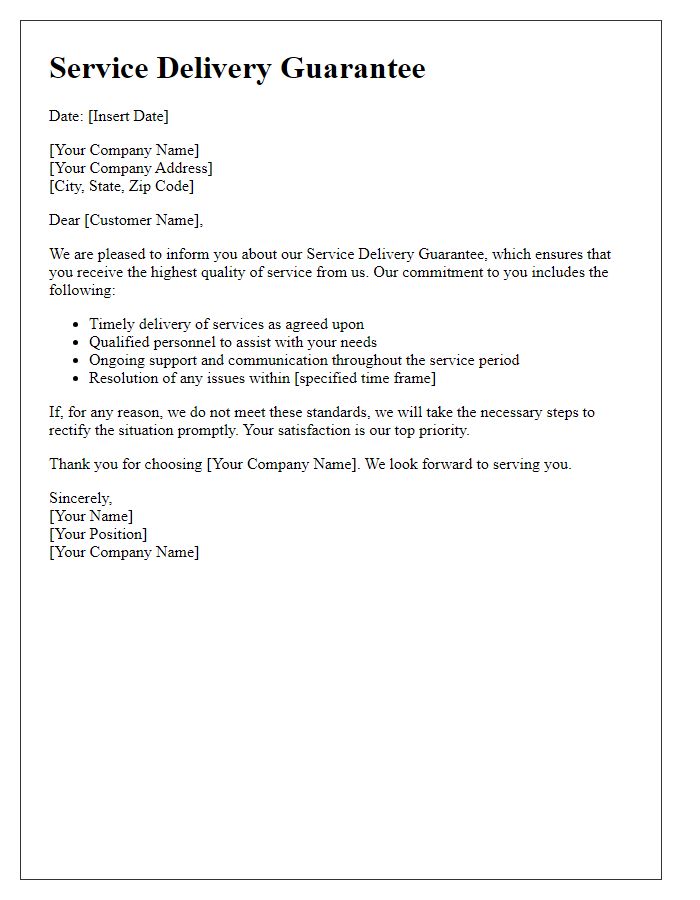
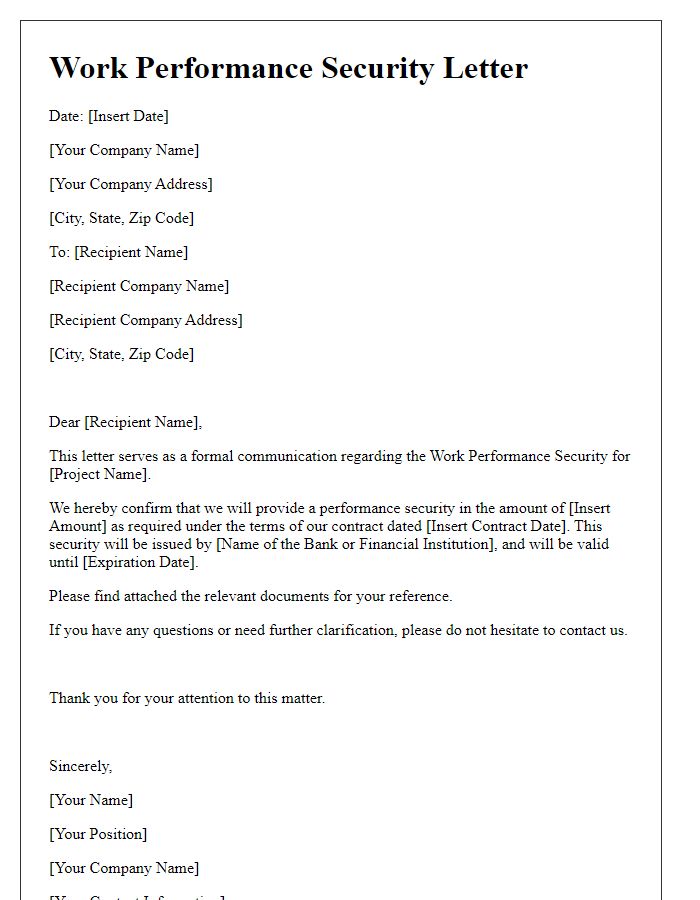
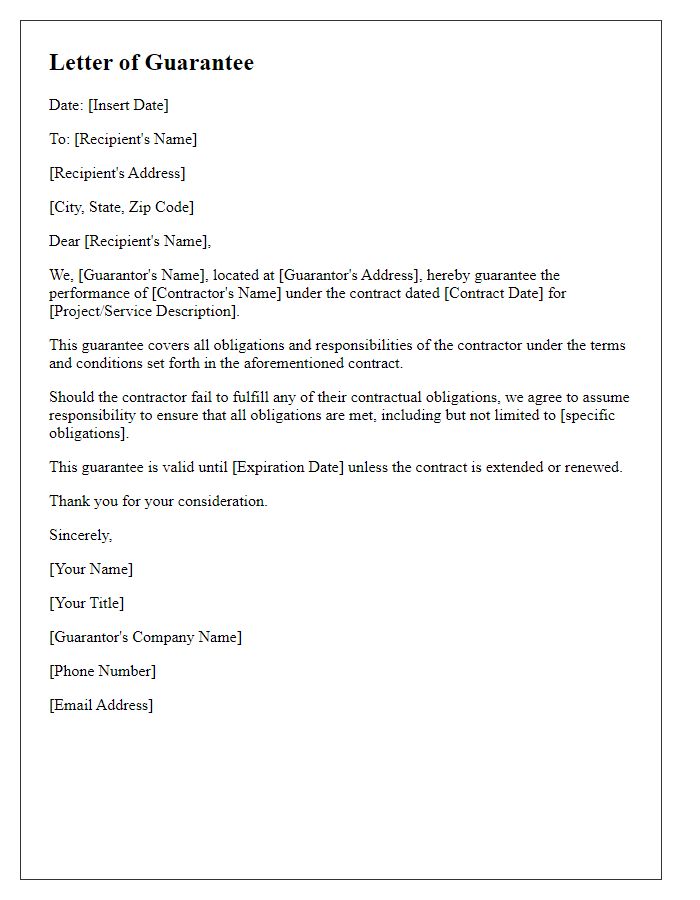
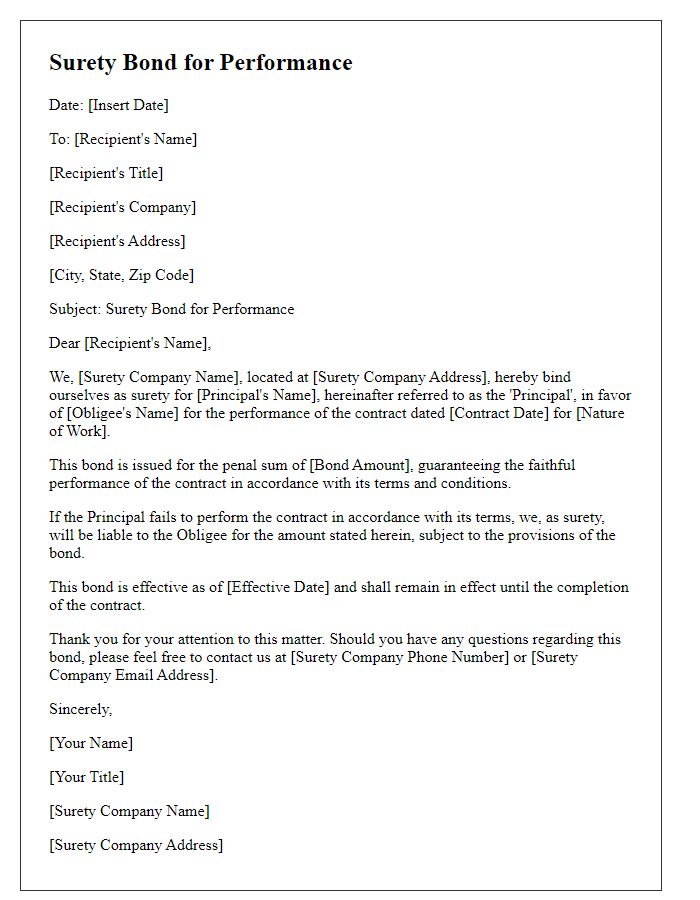
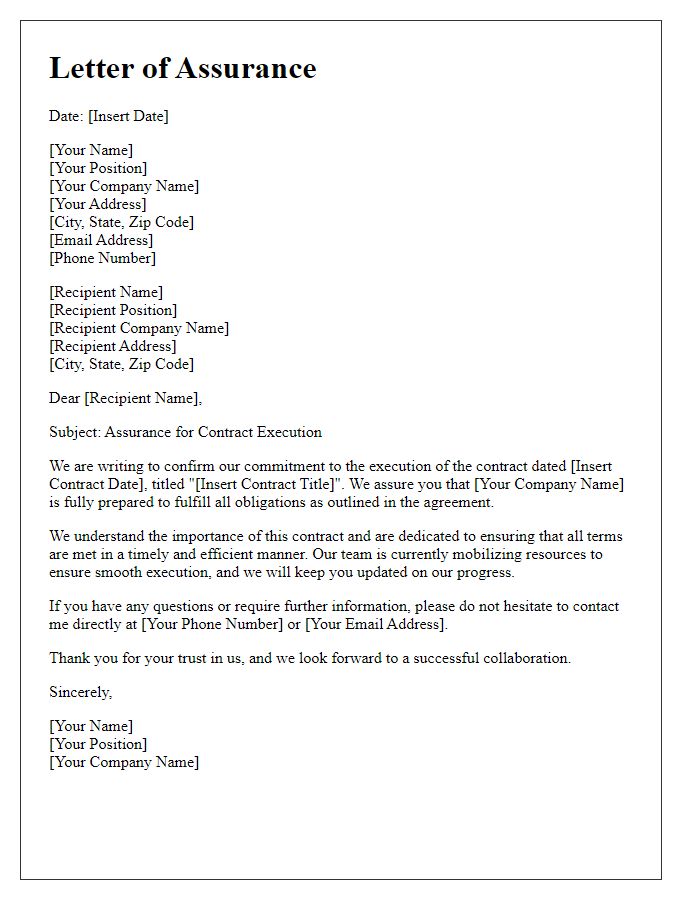
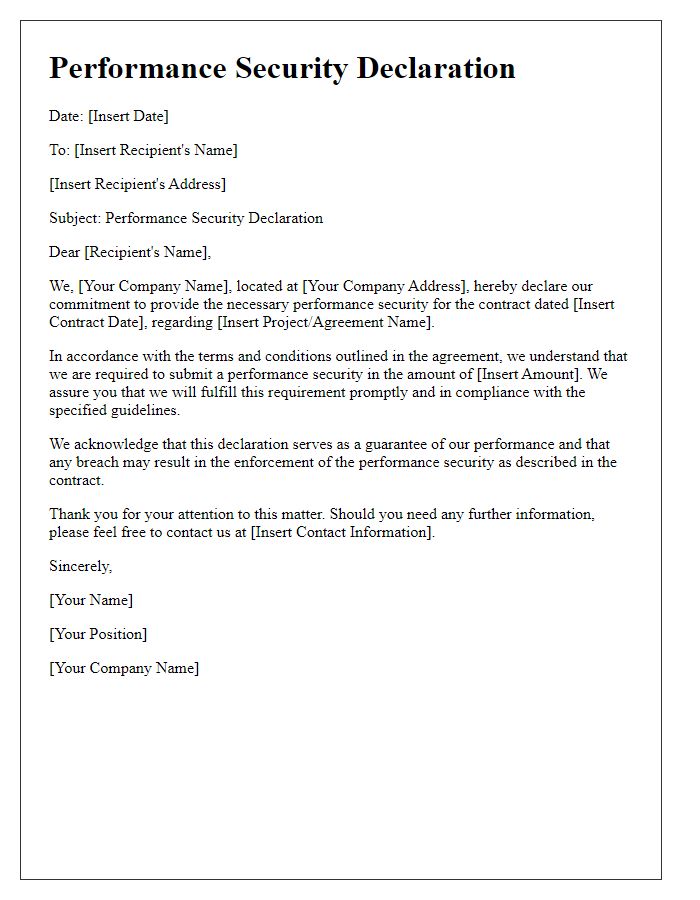


Comments